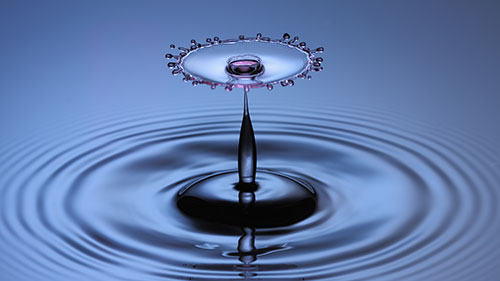
El Nino has brought back winter rains, and that’s cause to celebrate. But it’s not a reason to stop conserving water. Adequate water supply has always been an issue in Southern California, and the situation will only worsen with time.
The Need to Conserve Water Remains
We’re now receiving the forecast “above average” winter rainfall (up to 60% more than usual in some areas) which is great, but the biggest issue is rebuilding the snow pack as the source of most of our year-round water. Unfortunately, predicted warmer weather means that even two wet winters won’t be enough to get past the drought. And that still leaves us with long-term problems. Even before our “great drought” we’ve been drawing ground water far faster than it’s replenished by normal rainfall levels, and it’s important to remember that San Diego currently imports 85% of its water.
So it’s clear that the long term solution is to use less water.
The emergency cutbacks have been unpleasant, to say the least. Recycling water, that is using the same water more than once, is a great opportunity moving forward. “Waste” water can be purified back to high-quality potable (drinkable) water, but for many uses such as irrigation only minimal treatment is necessary. We can dramatically cut usage while still enjoying many of the things we’ve had to forgo the last few years.
Municipal Projects
Water districts and municipalities have been planning, and constructing, water reclamation plants long before the latest drought. They have the goal of purifying waste water back to drinking quality in order to avoid the huge cost of a second piping system to distribute non-potable water to all their customers. But that’s still very expensive and construction takes quite a long time. Even so, Southern California has been a leader. You can learn about our major project here: http://www.nbcsandiego.com/
San Diego County has also established projects using
Cities, agencies, and voters are now strongly behind these sorts of projects as the path to reliable and sustainable water supplies. In many locations reclamation can be used for crop irrigation and help deal with rapidly dropping water tables. But it’s also possible, and economical, to have a major impact by recycling water at each building where it’s used, and reuse that water right at the site. Studies indicate that the total costs are lower, and that numerous small projects can come online far faster than “mega projects”
Home Water Recycling
 With a little investment homeowners can do their own water reuse that’s far more effective and convenient than a bucket in the shower. Water recycling systems costing any where from a few hundred to several thousand dollars are a great way to get showers and lawns back to normal without increasing water usage. Low-cost systems provide filtered water that can be used in landscaping with a few precautions, and the high-cost systems deliver sparkling clean sanitized drinking water quality. Together with other conservation measures it’s possible to bring usage in line with availability far into the future.
With a little investment homeowners can do their own water reuse that’s far more effective and convenient than a bucket in the shower. Water recycling systems costing any where from a few hundred to several thousand dollars are a great way to get showers and lawns back to normal without increasing water usage. Low-cost systems provide filtered water that can be used in landscaping with a few precautions, and the high-cost systems deliver sparkling clean sanitized drinking water quality. Together with other conservation measures it’s possible to bring usage in line with availability far into the future.
Not all water needs to be of drinking quality, so reuse makes a lot of sense. The drains from showers, tubs, bathroom sinks, and clothes washers can be used for irrigation, and eliminate a major portion of the household’s water bill. But it’s important to fully understand what water sources can be safely reused, what treatment is necessary, and how the reused water should be handled. In other words, installation by an experienced professional.
Appropriately sized systems are available from companies such as Aqua2 and Nexus. Some companies, such as Sloan and Saniflo, have products that transfer water from the bathroom sink into the toilet tank. LEED projects and guidelines show that reductions of 50 to 70% over pre-drought usage can be readily achieved, so that we can cut yet back another big chunk and and still have green landscaping.
Water Recycling for Commercial Buildings
On-site recycling is already required for landscaping and other “aesthetic” uses at many commercial facilities and has been quite successful at office parks, hotels, resorts, schools, and more. Besides irrigation and fountains, reclaimed water can be used in cooling towers and boiler feeds with the proper treatment. But they do require additional plumbing for capturing “clean” or grey water, and separate supply plumbing if reclaimed water is to be used for flushing.
So, again, professional plumbing companies with water recycling experience are called for. But the building owner’s investment has significant returns. Commercial reuse cuts both potable water use and waste water discharge roughly in half, saving on both water and sewer fees. And recycling is often necessary in order to meet development restrictions.
For larger facilities, even blackwater can be recycled with systems such as those from Aquacell that filter, bio-treat, ultra-filter, disinfect, and then finally chlorinate.
In Brief
Looking back on Southern California’s history, dams and canals were the lifeblood that created nearly all of our inland cities and agricultural areas. Even today an adequate and reliable water supply is vital for a vibrant economy. Yet even in “good times” we’ve been depleting groundwater and other sources. So it’s critical that residents, businesses, and water agencies work together to use water recycling for a sustainable future we’ll all enjoy.

